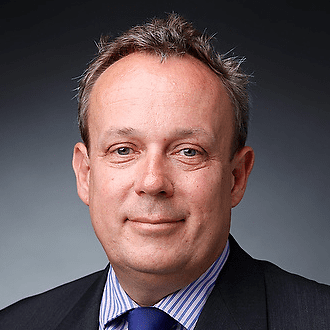The Internet of Things is one of the hottest technologies — or at least one of the hottest topics of conversation — today among field service leaders. But what does a future of smart, connected products hold for the the industry, and how should companies start preparing for that future?
To find out, we checked in with Mark Homer, VP of global customer transformation at ServiceMax. Keep reading to learn how companies like Schneider Electric are getting smart about the IoT, and don’t miss an upcoming webinar Mark will host on December 3 at noon GMT (free registration here).
What does early IoT adoption look like today in field service?

Mark Homer
Homer: Data about customers and services already exists in silos and is generated primarily for order processing, operations, service, warranty, marketing and sales. These traditional data sources are now capable of being supplemented by data from the product itself. Hooking up a test product and collecting raw data (temperature, vibration, revolution counters, noise generation, among others) is valuable for educating the product team.
Unlocking triggers and alerts becomes the foundation of new capabilities for product and asset optimization, monitoring or predictive maintenance. If you know product usage information, then you have valuable insight into how your customers use your products.
The IoT is not a spectator sport — you need to get in the game. Get smart and start exploring the consequences of smart machines in your business.
Which European companies are leading the way?
At PTC’s recent LiveWorx Europe conference in Stuttgart, Germany, I was delighted to present with Schneider Electric. For me, they typify a customer that is building the IoT into its products and services.
REGISTER TODAY: What Impact Will the IoT Have on Field Service Operations?
Schneider is doing some incredible things with the IoT to drive subscription-based contacts, up sell services, increase uptime by predicting when products will fail and enabling remote diagnostics. The company’s “Connected Loop” model is enabling IoT data generated by connected assets to flow into a data lake that is accessible to Schneider’s sales, design and field service teams. This is completely revolutionizing the company’s business model driving substantial profits.
Field service leaders have lots of priorities to juggle. Should the IoT be on the top of the list?
Absolutely. As a service leader, you should already be part of a digital initiative now, working with colleagues and representatives from marketing, product management, R&D, engineering and IT.
How you run a service team — and an entire company — is going to change because of smart, connected products that already allow us to:
- Monitor and measure the product in a deep way, 24×7.
- Separate the control of the product from the physical into remote control and remote connectivity.
- Optimize product performance in a new way by taking advantage of remote diagnostics to drive efficiencies when servicing the product.
- Achieve autonomy. If we have all of this data and we can monitor, control and make use of algorithms, then we are only a few steps away from allowing the product to measure itself.
The end of this journey? Machine learning where products decide what they do. I challenge you to name a CFO or CEO who wouldn’t want these efficiencies for their business.
Will the IoT be a game changer for service profitability?
Yes. Reflect on the step change from other significant business forces in history, such as industrialization, globalization and now digitalization. The IoT, data and algorithms are going to change the way we interact with smart assets and the industrial Internet. This will fundamentally change how we maintain products, provide services, and manage components and their end-of-life replacement. Undoubtedly, the efficiencies that these immense changes bring will drive huge increases in profitability for service organizations.
To hear more about the IoT’s impact on field service operations, register for ServiceMax’s webinar on December 3, 2015, at 12pm GMT.


Share this: